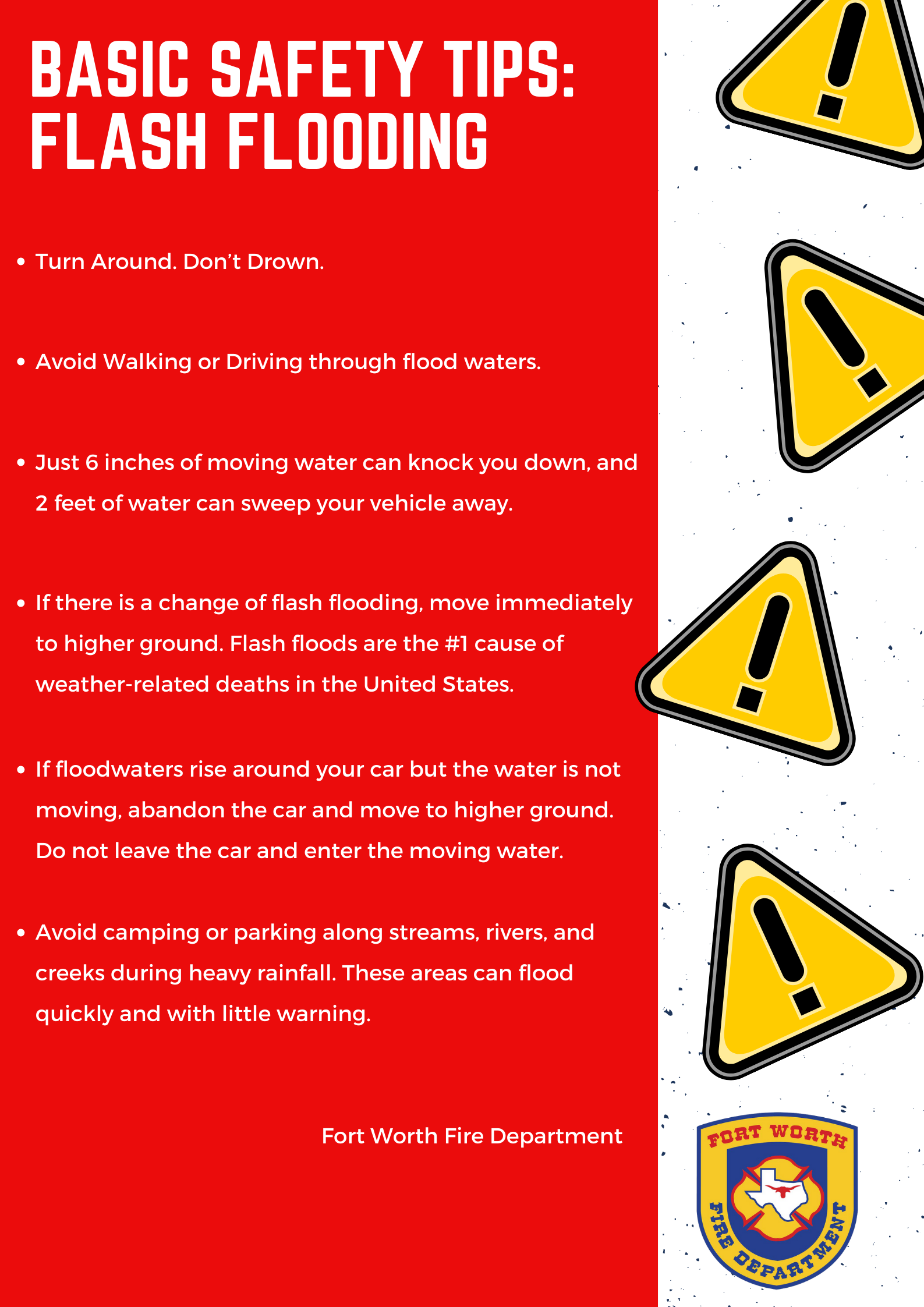Flash Flood Safety: Understanding Alerts And Protecting Yourself And Your Family

Understanding Flash Flood Warnings and Alerts
Knowing the difference between various weather alerts is the first step in effective flash flood safety. Understanding the severity of each alert will help you respond appropriately and swiftly.
-
Flash Flood Watch: Conditions are favorable for flash flooding. This isn't a cause for immediate panic, but it's a crucial signal to monitor weather reports closely, prepare your emergency kit, and review your family's evacuation plan. Be ready to act quickly should conditions worsen. Stay informed by checking trusted weather sources.
-
Flash Flood Warning: Flash flooding is imminent or occurring. This is your urgent call to action. Immediate evacuation to higher ground is necessary. Do not delay. Your life is at risk.
-
Flash Flood Advisory: Flash flooding is possible. While the threat is less immediate than a warning, this advisory indicates a significant chance of flash flooding. Remain vigilant, monitor weather reports continuously, and be prepared to act quickly if a warning is issued.
Several methods exist for receiving timely flash flood alerts:
-
NOAA Weather Radio: A reliable source of official weather information, including flash flood warnings and advisories. Consider purchasing a NOAA Weather Radio with a tone alert for immediate notification.
-
Weather Apps: Numerous weather apps for smartphones provide real-time alerts, forecasts, and radar imagery. Ensure your location settings are accurate.
-
Local News: Stay tuned to local news channels, radio stations, and websites for the latest weather updates and emergency information.
Understanding the factors that contribute to flash floods is also vital for preparedness. These include:
-
Intense Rainfall: Heavy downpours, especially over short periods, can overwhelm drainage systems, leading to rapid water accumulation.
-
Dam or Levee Failures: Breaches in water control structures can unleash massive amounts of water, causing catastrophic flash flooding downstream.
-
Sudden Snowmelt: Rapid melting of snowpack, often exacerbated by warm temperatures or heavy rainfall, can significantly increase water levels in rivers and streams.
Preparing Your Home and Family for a Flash Flood
Proactive preparation is key to effective flash flood safety. A well-defined plan minimizes risk and ensures the safety of your family and property.
-
Family Communication Plan: Designate an out-of-state contact person as a central point for family members to check in during and after a flash flood. This helps ensure everyone is accounted for.
-
Evacuation Routes and Emergency Kit: Identify multiple escape routes from your home in case one becomes blocked by floodwaters. Assemble an emergency kit containing essentials such as:
- Water (at least one gallon per person per day)
- Non-perishable food
- First-aid kit
- Medications
- Flashlights and extra batteries
- Whistle
- Important documents (stored in waterproof containers)
-
Secure Valuable Documents and Items: Place essential documents, irreplaceable items, and valuables in waterproof containers and store them in a safe, elevated location.
-
Flood Insurance: Consider purchasing flood insurance, even if you don't live in a high-risk area. Standard homeowners insurance typically doesn't cover flood damage.
-
Pet Safety Plan: Include your pets in your emergency plan. Have carriers and leashes ready, and know where to take them to safety.
Actions to Take During a Flash Flood
When a flash flood warning is issued, immediate action is paramount. Your safety is the top priority.
-
Move to Higher Ground: Evacuate immediately to higher ground. Time is critical. Don't wait for the water to rise.
-
Avoid Driving Through Flooded Areas: Even seemingly shallow water can be deceptively dangerous. The current can sweep your vehicle away, and the depth of the water may be greater than it appears.
-
Never Walk or Drive Through Flowing Water: The force of moving water is incredibly powerful and can easily knock you off your feet.
-
Turn Off Utilities: If instructed by authorities, turn off gas, electricity, and water to prevent further damage and hazards.
-
Stay Informed: Continue monitoring weather reports and follow instructions from emergency personnel.
What to do After a Flash Flood
Once the immediate danger has passed, there are still significant steps to take:
-
Check for Injuries: Check yourself and your family for injuries and seek medical attention if necessary.
-
Avoid Contaminated Water: Floodwaters often contain harmful bacteria, chemicals, and debris. Avoid contact as much as possible.
-
Report Damages: Report any damage to your property and infrastructure to local authorities.
-
Contact Insurance Company: Contact your insurance company to begin the claims process as soon as possible. Keep detailed records of the damage.
-
Beware of Secondary Hazards: Be aware of secondary hazards such as downed power lines, damaged structures, and debris.
Conclusion
Flash flood safety is paramount. By understanding flash flood warnings, preparing your home and family, and taking appropriate actions during and after a flash flood event, you significantly reduce the risks to your well-being and property. Remember, being prepared is the best defense against the devastating power of flash floods. Don't wait until it's too late – develop your flash flood safety plan today! Stay informed, stay safe, and prioritize your family's flash flood safety. Learn more about flood safety and develop your personal action plan today!

 Amundi Dow Jones Industrial Average Ucits Etf A Guide To Net Asset Value
Amundi Dow Jones Industrial Average Ucits Etf A Guide To Net Asset Value
 Konchita Vurst Kak Se Promeni Sled Evroviziya
Konchita Vurst Kak Se Promeni Sled Evroviziya
 Sadie Sink And Mia Farrow Photo From Broadways Photo 51
Sadie Sink And Mia Farrow Photo From Broadways Photo 51
 Retail Sales Growth Impacts Bank Of Canada Interest Rate Decision
Retail Sales Growth Impacts Bank Of Canada Interest Rate Decision
 Naomi Kempbell I Ee Deti Kak Vyglyadyat Nasledniki Znamenitoy Modeli
Naomi Kempbell I Ee Deti Kak Vyglyadyat Nasledniki Znamenitoy Modeli
